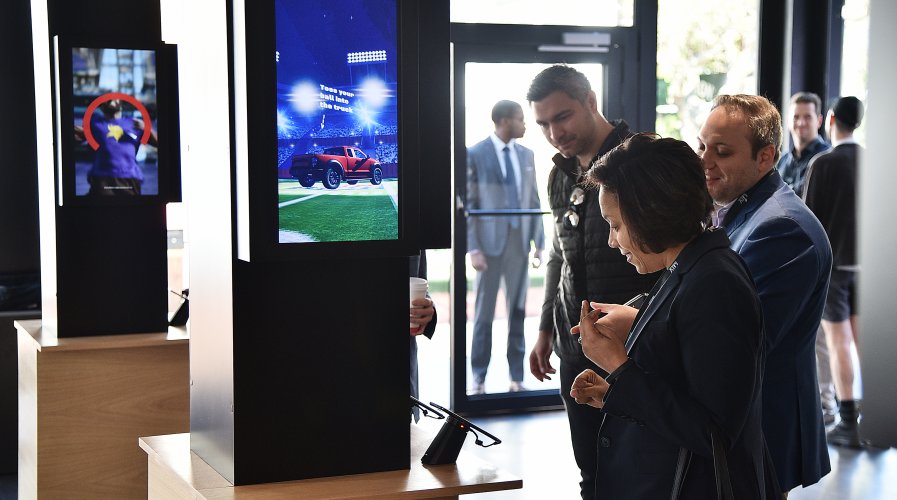
Visitors checking out 5G-enabled devices at last year’s Super Bowl. Source: AFP
How 5G will drive the commercial growth of Internet of Things
- Widescale adoption of 5G-capable smart devices expected by 2025
- Enterprise IoT application expected to overtake consumer usage in that time frame
- Smart cities & Industry 4.0 will be massive growth areas
The growth and iterative evolution of wireless network technologies has fueled the development of many mobile connected applications over the years.
This has given rise to not only the smartphone and tablet, but the impact of this can be felt in numerous sectors from e-commerce, to wearable technology, banking, communications, transportation, navigation… the list is endless.
Now with the advent of 5G network capabilities and deployment picking up pace with availability in nearly 400 cities across 34 countries, it looks like 5G is poised to blaze new innovation trails across multiple industries just like its predecessor 4G – except much, much faster.
5G speeds are said to be a minimum of ten times faster than our current 4G networks, so the list of industries and devices that can benefit from greater connectivity is growing significantly larger.
Connectable smart devices, the Internet of Things (IoT), currently rely on multiple forms of wireless tech to become networked including Wi-Fi and Bluetooth. In the coming years, new reliable, low latency connections that are capable of hyperfast digital data transfers like 5G will change the way many devices, software, and service providers will operate.
Mobile industry data researchers at GSMA expect IoT connections to reach 25 billion by 2025, slightly more than double the 2019 figure of 12 billion connections. Furthermore, that growth will be driven in part by the wider availability of 5G speeds worldwide, with 1.8 billion 5G connections estimated by 2025.
GSMA data says that enterprise IoT connections will overtake consumer connected devices by 2024 at 13.3 billion connections, or slightly more than half of all IoT connections by 2025, even though consumer IoT connections are expected to have doubled in the same period. With the wide availability of 5G at that time, it is likely devices will begin to be introduced with smart connectivity features already activated by default.
GlobalData analysts believe that one of the key drivers of 5G-powered IoT will come from software platforms and the growth in use of IoT management and operational equipment to vertical industries like manufacturing, utilities, and energy as they continue to push the development of smart cities and Industry 4.0 initiatives.
The scalability and reliability of upcoming high-speed 5G networking means that a host of enterprise IoT solutions will be powered by it in the coming years. Besides the aforementioned Industrial Internet of Things (IIoT) applications, GSMA points to smart health, smart retail, smart vehicles as some of the industries that will be revolutionized.
Consumer applications will also take off in a big way over the next five years, with lesser but still formidable growth expected in sectors ranging from consumer electronics to wearables like smartwatches.
READ MORE
- Ethical AI: The renewed importance of safeguarding data and customer privacy in Generative AI applications
- How Japan balances AI-driven opportunities with cybersecurity needs
- Deploying SASE: Benchmarking your approach
- Insurance everywhere all at once: the digital transformation of the APAC insurance industry
- Google parent Alphabet eyes HubSpot: A potential acquisition shaping the future of CRM


